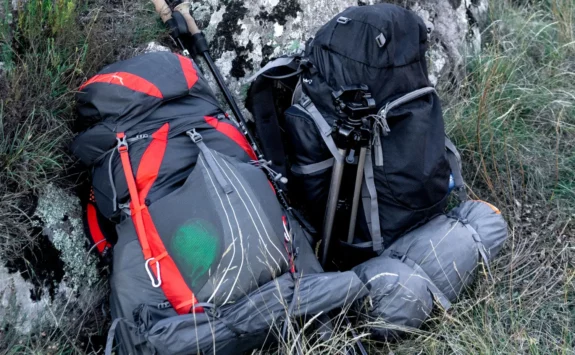Packing List For Annapurna Base Camp Trek
Annapurna Base Camp is a scenic and demanding journey with amazing views of the Annapurna massif. This hike is truly an adventure, from verdant forests and lush greenery to high-altitude passes and steep mountain landscapes. One of the frequent questions we will get is about the packing list for Annapurna Base Camp Trek. So, we are providing you with basic information regarding the best packing list for the Annapurna Base Camp Trek.
You will carry all your belongings on the trek, so remember to pack lightly. To have the best time possible on the trail, getting sturdy, high-quality gear is smart. With the proper clothing and planning, a journey through the heart of the Annapurna region may be an amazing experience.
A packing list for Annapurna Base Camp Trek is like a toolbox. It’s important to bring the right items so you can adequately prepare and tackle any unexpected challenges on the trek.
While trekking into such difficult terrain, a packing list comes in very handy, giving you a clear idea of what to take during your holiday. It is always a good choice to avoid access gear and other personal things for a hassle-free trip. So, what will you plan to pack for Annapurna Base Camp Trek?
This packing list will assist you in preparing for your trek to Annapurna Base Camp and ensure you have everything you need. But this is only for guidelines. The final list will depend on your taste and sense of judgment.
Weather Variations

The climate in the Annapurna region can vary considerably depending on the season and altitude. Expect various weather conditions on the trek to Annapurna Base Camp, including warm and sunny days, chilly and foggy days, and possibly rain or snow.
The weather at lower elevations is typically pleasant and sunny throughout the day but can get cold at night. As altitude increases, the climate becomes colder and more changeable. It is vital to be prepared for these temperature fluctuations by bringing layers of clothes that may be added or removed as needed.
Spring and Autumn in Annapuran base Camp are considered one of the best seasons for trekking. Both seasons are dry and favorable for trekkers to enjoy the view. You can witness the clear, blue sky without hazy and misty conditions.
Rain is also possible on the Annapurna Base Camp trip, especially during the monsoon season from June to September. Protect yourself from the weather by bringing a waterproof and windproof outer layer, such as a rain jacket and pants.
The winter months (December to February) are generally considered the best time to trek to Annapurna Base Camp, as the weather is generally clear and dry. However, it’s important to be prepared for cold temperatures. The weather at high altitudes can be quite chilly, with nighttime temperatures dropping well below freezing.
Weight Limits
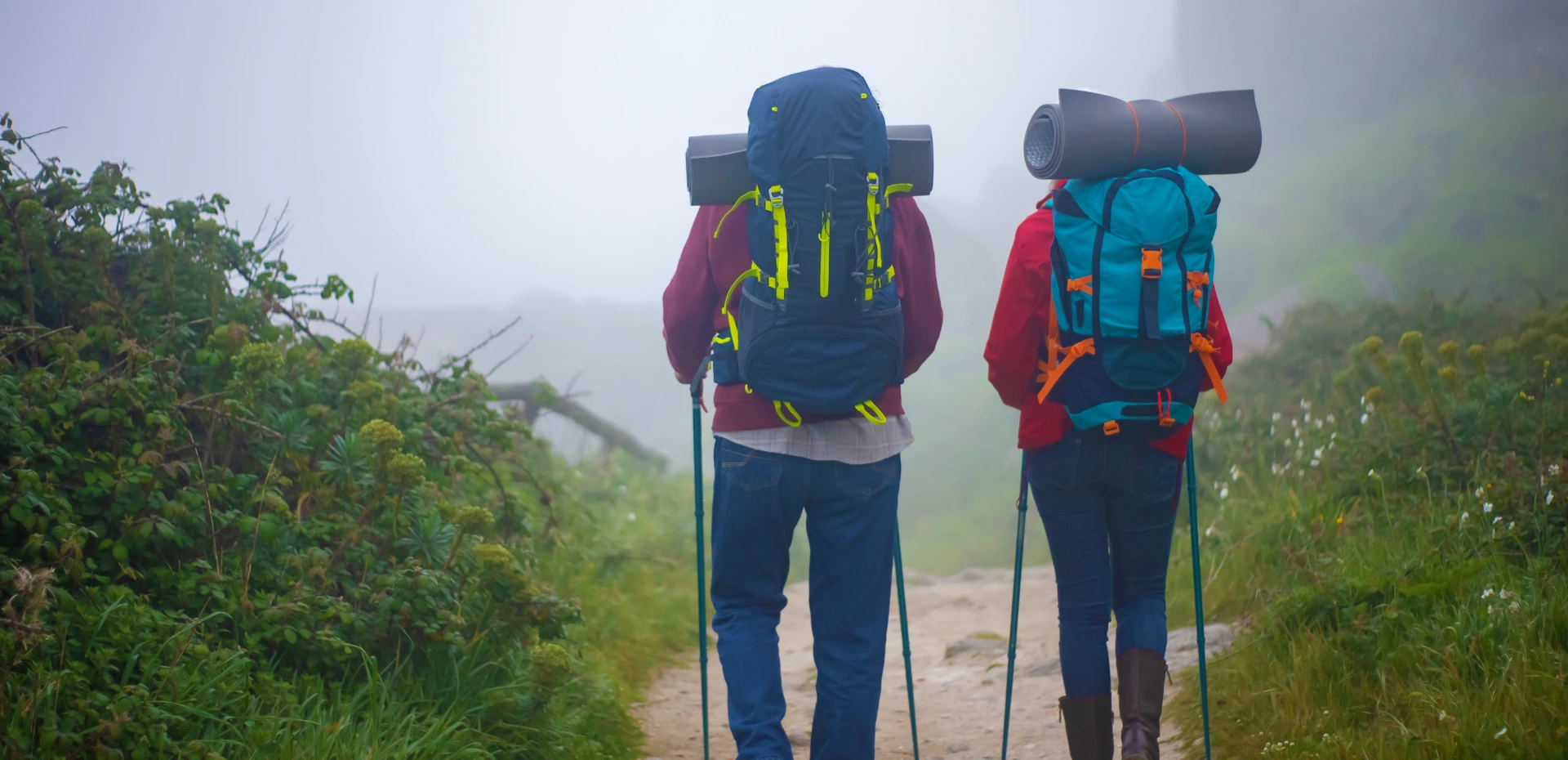
During a trip to Annapurna Base Camp, you can get a porter to carry your stuff. Porters are trained and skilled in moving heavy loads across great distances. Hiring a porter might be a practical and cost-effective solution to reduce your weight and enhance the enjoyment of your walk.
There are no legal weight restrictions for porters in Nepal; however, it is widely accepted that a porter’s load should not exceed 20 kg (44 pounds). This is a reasonable amount for a porter to carry on a multiday hike.
When hiring a porter, it is essential to consider the weight of your items and pack them as lightly as possible. This will aid in ensuring that your porter can carry a safe and reasonable weight while minimizing the impact on their health and wellbeing.
In addition to the weight of your belongings, you should also consider their size and form, as this can affect a porter’s ability to comfortably handle them. Avoid bringing bulky, strangely shaped things that a porter may find difficult to transport.
When hiring a porter for a hike to Annapurna Base Camp, it is crucial to be mindful of the weight and size of your belongings. By packing lightly and carefully, you can guarantee that your porter can carry a safe and manageable burden and that the journey is pleasurable for everyone.
Checklist of Packing List for Annapurna Base Camp Trek

Before we start, it is important to know that the ABC trek is challenging before you head out for the essential packing list. Moderate level fitness and prior preparation will be best to complete this trek. You can easily complete this trek if you don’t overpack.
Note: This packing list is also suitable for moderate Himalayan treks like Everest Base Camp Trek, Manaslu Circuit Trek, and Annapurna Circuit Trek.
We have listed the ultimate essential packing list guidelines for the Annapurna Base Camp Trek.
Travel Documents
- Valid Passport
Along with 2-3 photocopies of the same and also a photo on your phone - Airline tickets and trip blueprint
- Nepal Visa
Provided on-arrival in Kathmandu airport (except for some countries that need to apply for visas at their country’s Embassy or consulate). - 4 Passport size photos
- Travel Insurance
That covers medical expenses, flight cancellation, rescue, and air ambulance (if any). Keep both print and digital copies. - Yellow Fever Certificate
Travellers over 9 months who were in airport transit for more than 12 hours from a Yellow Fever-risk country. - Cash & Credit Cards
Along with your credit/debit card, you will need cash (at least $200-$300) for the duration of the trip.
Trekking Clothing
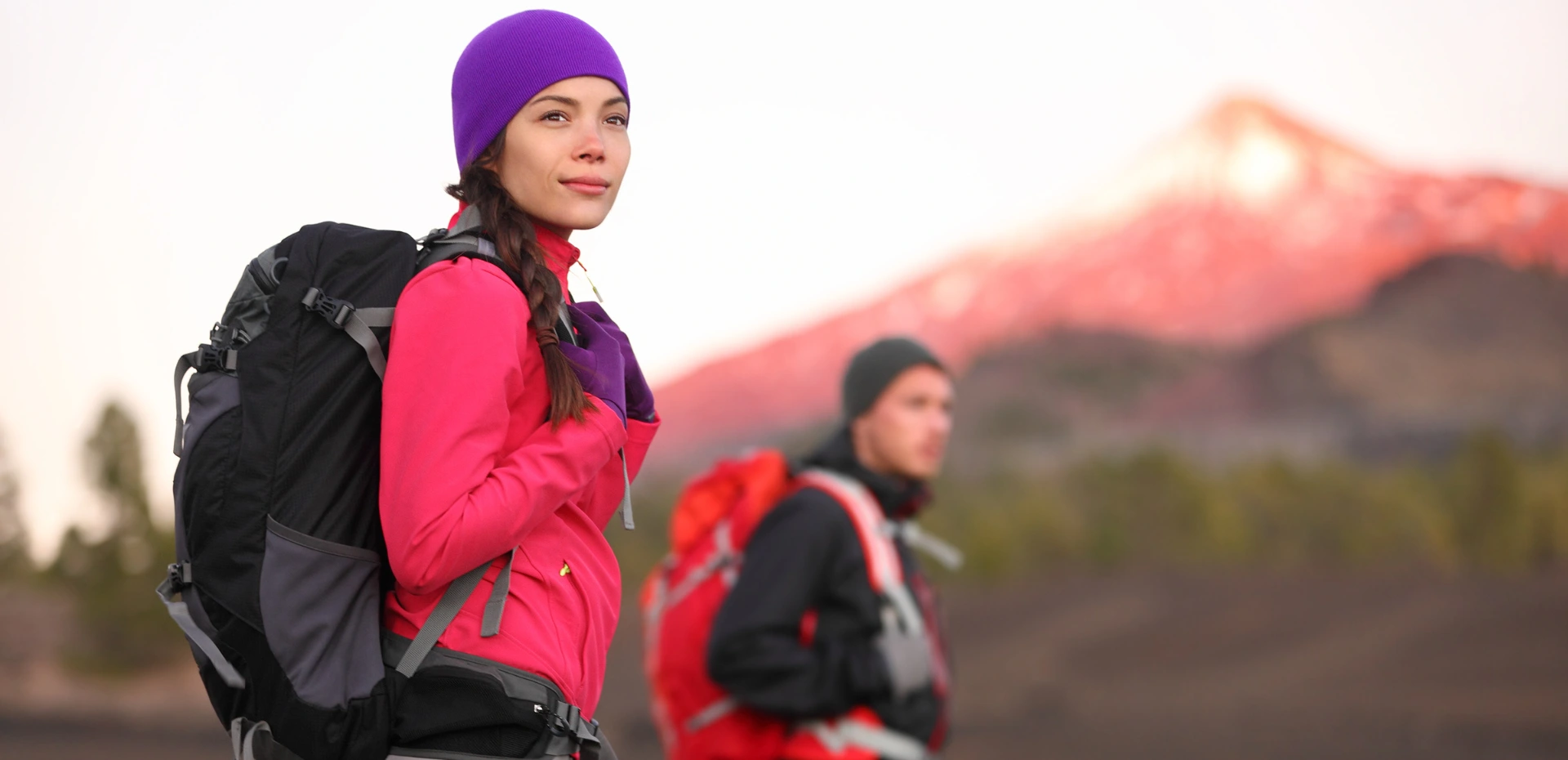
While you are going to high altitude, you will experience all four weather in 1 day. So, when you are planning to pack cloth keep this n your mind. Also, layer cloths are essential to adjust with variance temperature.
When choosing trekking clothing, it’s important to consider the following factors:
- Layering
The trick to remaining comfortable on the trail is to dress in multiple layers. This allows you to quickly manage your body temperature by adding or removing layers. Bring a combination of base layers, mid layers, and outer layers to ensure you have adequate warmth, insulation, and weather protection.
- Fabric
Look for clothing made from humidity, quick-drying fibers that will keep you dry and warm while traveling. As they are lightweight and breathable, synthetic fabrics and merino wool make excellent base layer options. As warm and insulating materials, fleece and down are excellent choices for mid-layers. Waterproof and windproof fabrics are required for the outer layers in order to provide protection from rain and wind.
- Fit and comfortable
Choose attire that is comfy and well-fitting. Avoid wearing clothing that is excessively tight or too loose, as it may limit your mobility or cause chafing. Look for garments with flat seams and other features that prevent irritation and discomfort.
- Durability
Look for clothing constructed of durable materials that can survive the trail’s demands. Avoid fragile or fragile materials that are vulnerable to ripping or wearing out quickly.
Overall, it is crucial to select gear that is appropriate for the weather conditions you will encounter on your walk to Annapurna Base Camp, as well as comfortable, durable, and suitable to the trail’s demands. With the appropriate clothing, you can feel secure and focus on your walk whatever the weather is like.
Headwear
- Brimmed Hat or Sun Cap
- Sunglasses
- Buff/Neck Warmer/Neck Gaiter
- Knit Hat (preferably a fleece or woolen hat)
- Balaclava
- Bandana or Headscarf
- Bodywear
- Lightweight Thermal Tops
- Long/Short Polypropylene Sleeve Shirt for trekking at lower altitudes
- Fleece Pullover or Jacket
- Waterproof Jacket
- Sports Bra (for women)
- Down Jacket (Puffer Jacket) *
- Insulated Jacket (synthetic or down)
- Soft Jacket (fleece or soft shell)
- Hiking Pants
- Fleece Pants
- Light thermal trousers
- Underwear
Handwear
- Lightweight Gloves (wool or fleece)
- Heavyweight Gloves or Mittens
Footwear
- Trekking Boots
- Trekking Sandals
- Cotton Socks (optional)
- Gaiters (optional)
- Hiking Shoes
Trekking Equipment, Gears & Accessories
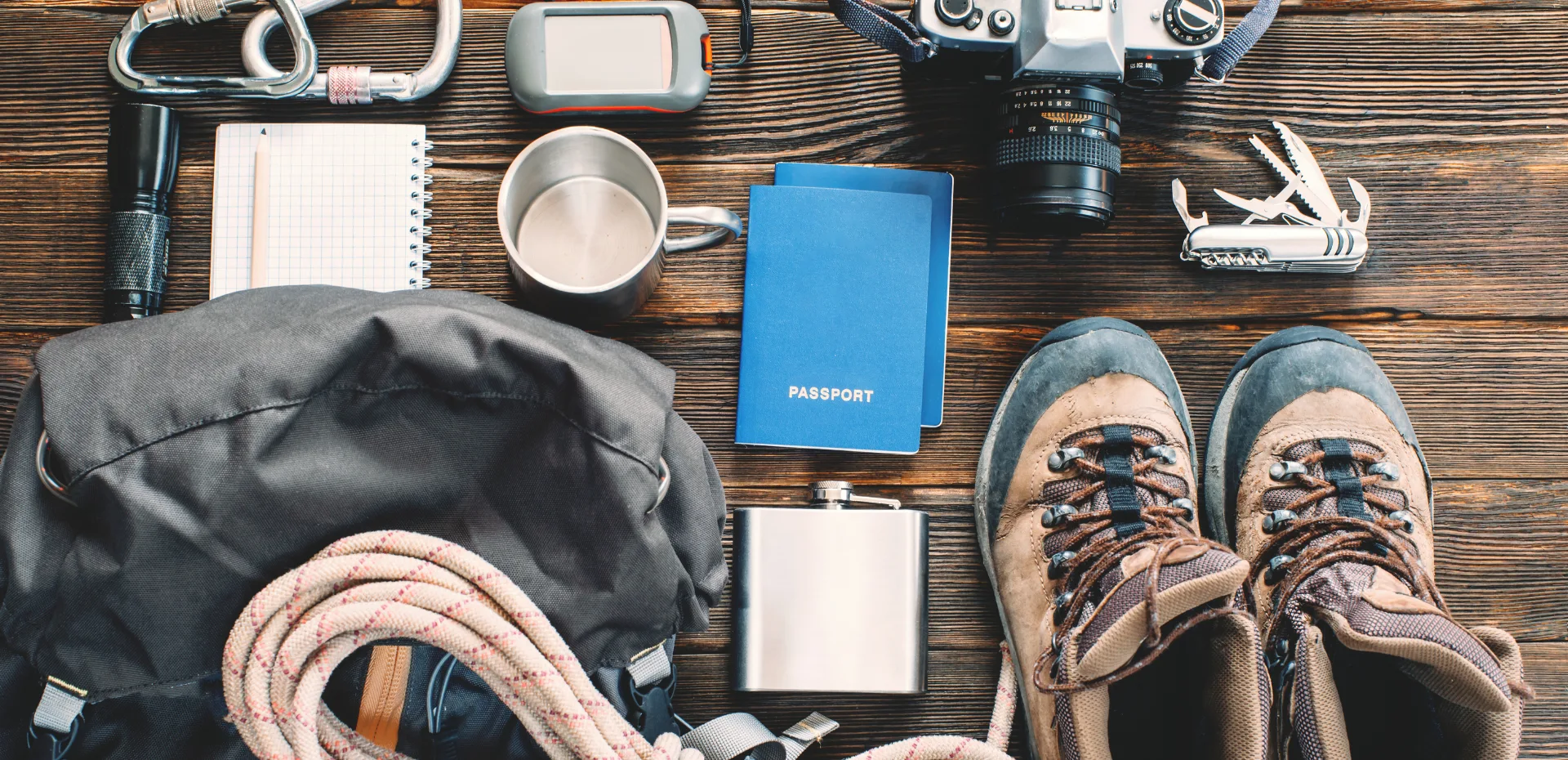
Trekking Backpack
A vital piece of equipment for any backpacking or trekking adventure, including a journey to Annapurna Base Camp, is a high-quality trekking bag. A backpack allows you to bring all of your equipment, clothing, and food on your back, allowing you to explore the route hands-free.
When selecting a backpack for trekking, it is essential to consider the following factors:
- Capacity: Be sure to get a backpack with an adequate capacity for your needs. For a hike to Annapurna Base Camp, you’ll need a pack with a minimum capacity of 50 liters to carry all of your equipment, clothing, and supplies.
- Fit in your body: Look for a backpack that fits well and is pleasant to carry. Consider the pack’s size and shape, as well as the shoulder straps, waist belts, and other features. On the trail, a correctly fitted backpack will be more comfortable and easier to carry.
- Materials: Search for a pack built of quality materials that can resist the trail’s demands. Since they are lightweight and resistant to wear and tear, nylon and polyester are commonly used for backpacks.
- Features: Consider the backpack’s features, including pockets, compartments, and attachment points, to ensure that they match your demands. A rucksack.
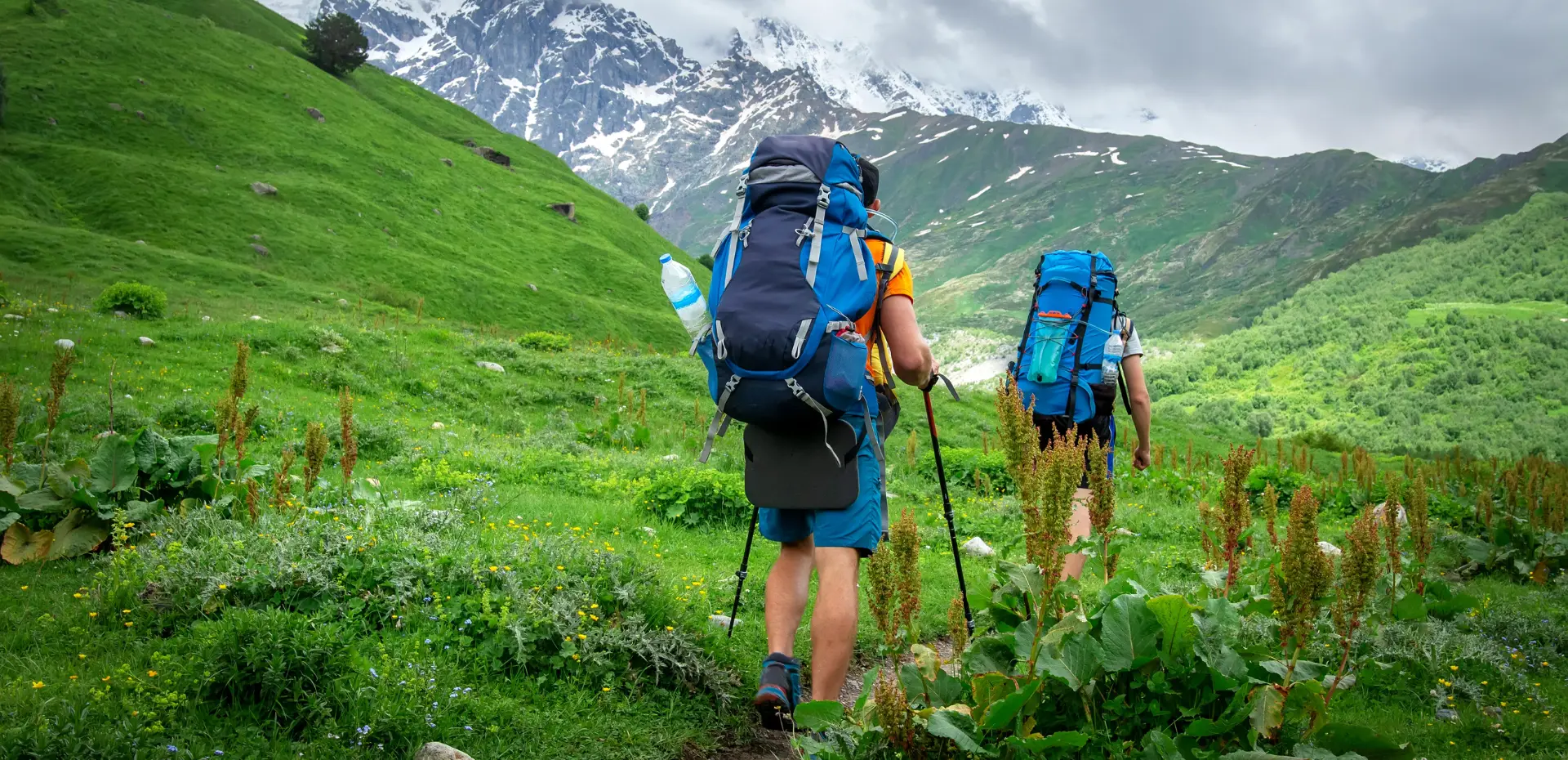
Sleeping Bag
Any trekking vacation, including a trek to Annapurna Base Camp, requires a sleeping bag. A sleeping bag provides insulation and warmth, shielding you from the freezing conditions that can occur at high altitudes. It is also a comfortable and practical method of sleeping on the route.
- Consider the following aspects while selecting a sleeping bag for a hike to Annapurna Base Camp:
- Choose a sleeping bag with a temperature rating that corresponds to the projected temperature range of your trip. For a hike to Annapurna Base Camp, you will need a sleeping bag suited for cold temperatures, as nighttime temperatures at high altitudes can dip far below freezing.
- Look for a sleeping bag that is light and easy to pack, as you will be transporting it on the path.
- Consider the sleeping bag’s shape and size to ensure a comfortable fit. Some sleeping bags are made for specific body shapes, such as tall or small so that you can find the ideal fit.
- There are numerous fill options for sleeping bags, including down and synthetic insulation. Down is typically lighter and more compressible than synthetic materials, although it might be more expensive and less durable. Synthetic materials are typically more long-lasting and cost-effective, but they can be heavier and less compressible.
It is essential to choose a sleeping bag rated for freezing temperatures, lightweight and packable, comfortable, and produced with a fill material that suits your demands and budget. On your hike to Annapurna Base Camp, you can stay warm and comfy with the correct sleeping bag.
Trekking Poles
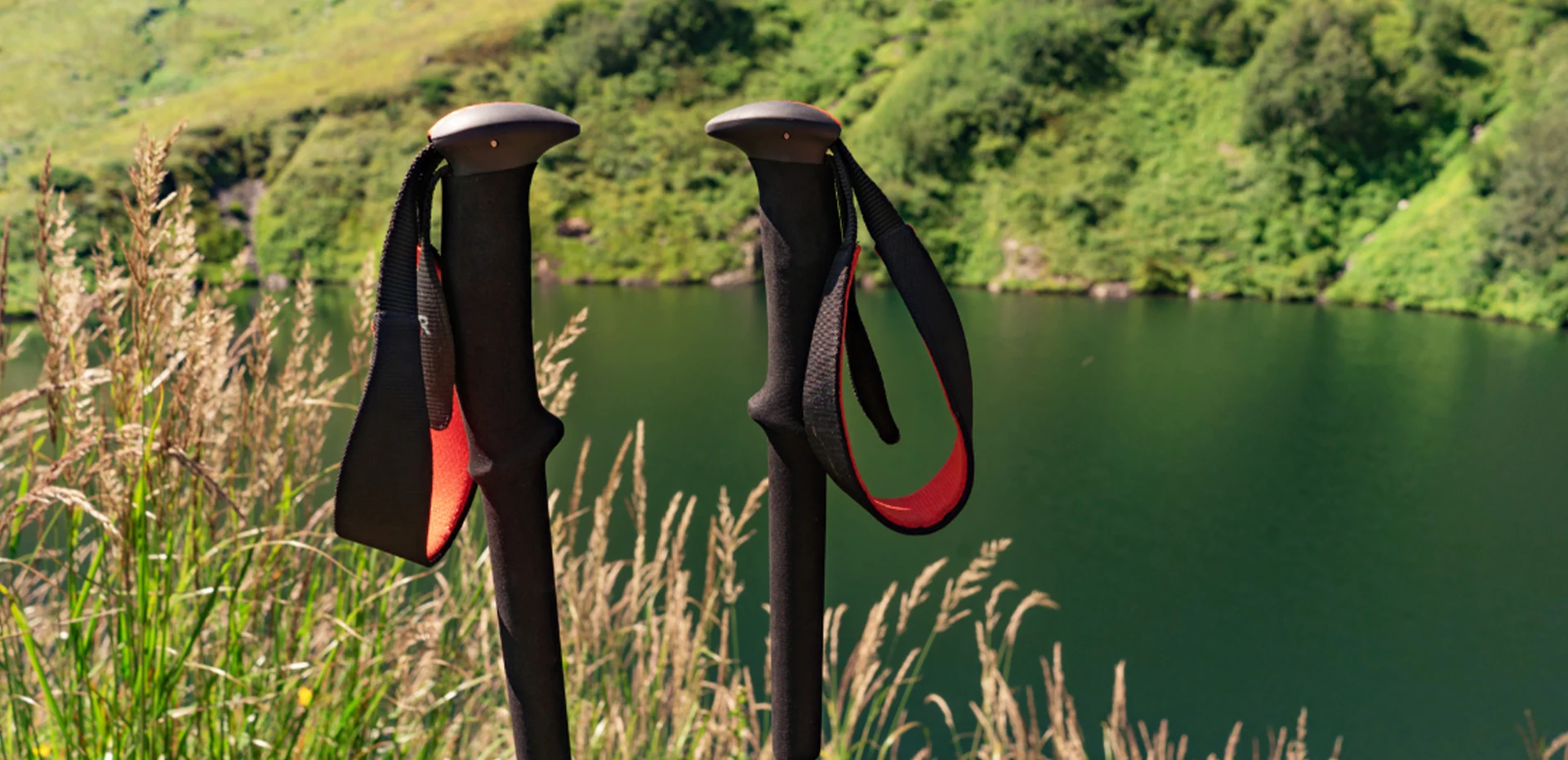
Trekking poles, also known as hiking poles or walking sticks, are essential equipment for any backpacking or trekking adventure, including a hike to Annapurna Base Camp. It gives stability, support, and balance on the route, allowing you to tackle tough or uneven terrain with less leg and knee pain.
It is essential to select trekking poles that are the proper length, constructed of lightweight and sturdy materials, have a solid locking mechanism, and have good gripping. With the proper trekking poles, you can maintain stability and comfort on the route regardless of the terrain.
Head torch with extra batteries
A head torch, often known as a headlamp, is essential for all hiking and trekking excursions, including the walk to Annapurna Base Camp. A headlamp enables you to see in low-light situations, such as camping, trekking at night, or navigating dense forests. It is also excellent for reading, cooking, and other activities that involve lighting.
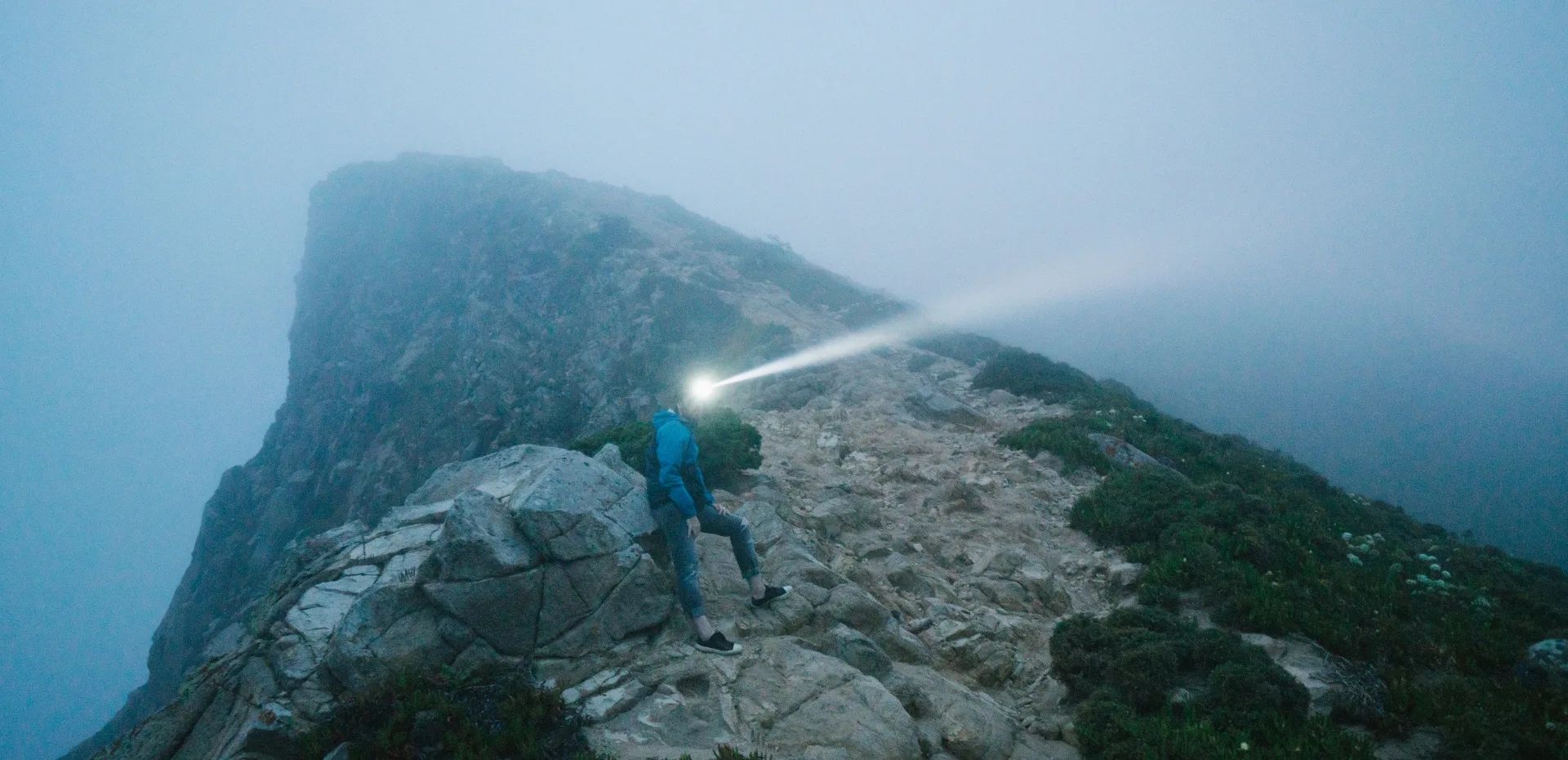
Selecting a headlamp that is bright, has a long battery life, is lightweight and compact, and is built of durable materials is essential. Pack additional batteries for your headlamp, as you will likely need them frequently while hiking. You can be safe and prepared for any outdoor adventure with a quality headlamp and enough batteries.
Raincoat
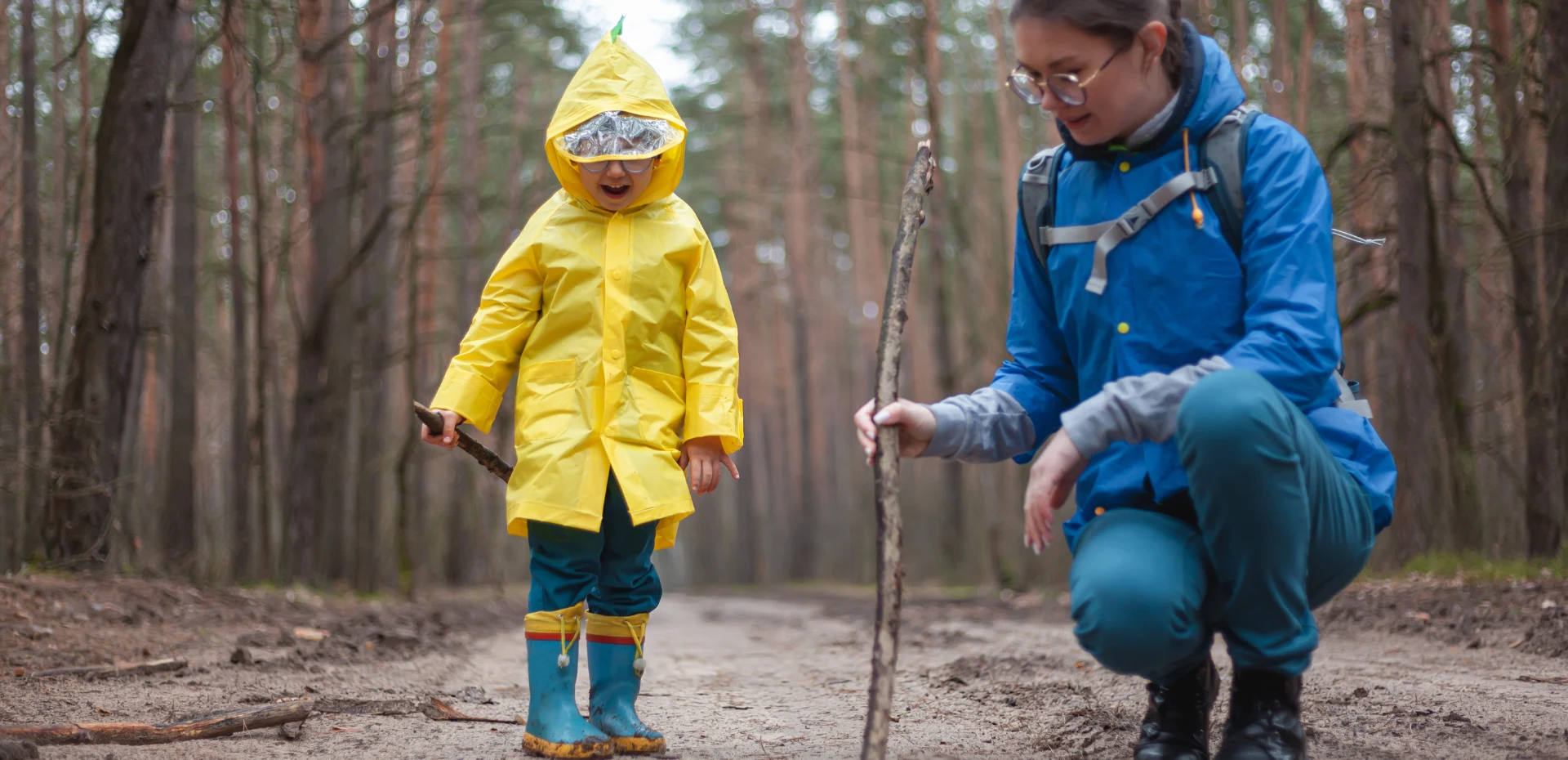
Any hiking or trekking trip, including a hike to Annapurna Base Camp, requires a raincoat. On the path, a raincoat protects you from rain, wind, and other elements, keeping you dry and comfortable.
Overall, it is essential to select a raincoat that is waterproof, windproof, comfy, and long-lasting. With the proper raincoat, you can remain dry and comfortable during your trek, no matter the weather.
First Aid & Medicine

During a hike to Annapurna Base Camp, it is essential to be prepared for any health problems that may emerge. On the trail, having a well-stocked first aid bag and the proper prescriptions will help you treat any minor injuries or illnesses that may arise.
Here are some items that you may want to include in your first aid kit for a trek to Annapurna Base Camp:
- Antibiotics
- Painkillers
- Cough Lozenges
- Bandages & Zinc Oxide Tape
- Skin blister repair kit
- Antidiarrheals
- Water purification tablets or water filters
- Oral Rehydration Sachets
- Eye drops
- Insect repellent
- Wet Wipes/Baby Wipes
- Electrolytes (optional)
Toiletries & Personal Hygiene
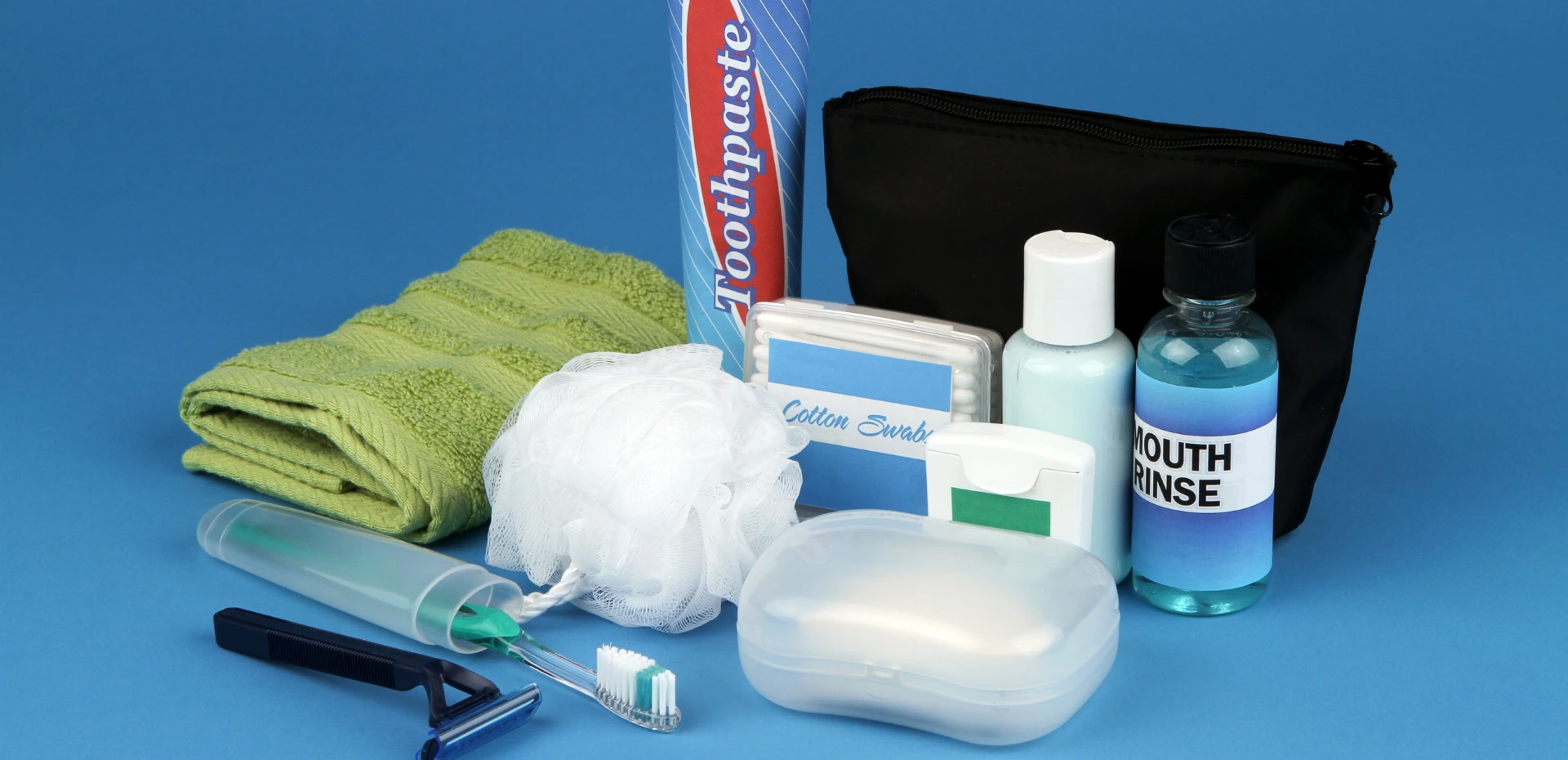
Practicing proper personal hygiene is essential for maintaining health and comfort throughout a hike. It is essential to have a variety of toiletries and basic hygiene essentials to keep you clean, healthy, and comfortable when hiking.
The following items may be included in your toiletry and personal hygiene kit:
- Toothpaste and brush
- Sunscreen cream
- Lip Balm
- Small bar or soap bottle
- Quick-drying towel
- Multi-purpose soap
- Deodorants
- Nail Brush & Clippers
- Hair Brush
- Face Flannel
- Hand and face moisturizing cream
- Toilet Paper
- Hand sanitizer
Miscellaneous Items
- Glasses
- Flasks
- Padlocks
- Multi-tools
- Power bank
- Universal adapter
- Camera
- Swiss knife (optional)
- Ziploc-type plastic bags (optional)
Suggested Brands of Gears

There are many brands that make high-quality gear for trekking, including gear for a trek to Annapurna Base Camp. Some popular and reputable brands that you might consider include:
- Sleeping bags: Marmot, Mountain Hardwear, The North Face, and REI are all well-known brands that make high-quality sleeping bags.
- Clothing: Patagonia, Arc’teryx, and Columbia are all popular brands that make high-quality trekking clothing.
- Backpacks: Osprey, Deuter, and Gregory are all well-known brands that make high-quality trekking backpacks.
- Trekking poles: Black Diamond, Leki, and REI are popular brands that make high-quality trekking poles.
- Head torches: Petzl, Black Diamond, and Fenix are all reputable brands that make high-quality head torches.
- Raincoats: Patagonia, Marmot, and The North Face are all well-known brands that make high-quality raincoats.
Overall, it’s important to do your research and choose gear that is suitable for your needs and budget, and that is made by a reputable brand. With high-quality gear, you can be confident that you have the tools you need to stay comfortable, safe, and well-equipped on your trek.
Tips on Packing List For Annapurna Base Camp Trek
It is essential to pack smartly, selecting weather- and trail-appropriate, lightweight, and compact equipment and clothing. On your walk to Annapurna Base Camp, you can be well-equipped and prepared for any adventure with careful planning and packing.
Here are some tips for packing for a trek to Annapurna Base Camp:
- Create a list of all the stuff you will need for the hike, including equipment, clothing, and toiletries. This will ensure you don’t skip anything essential and help you pack efficiently.
- Think about sustainability before Packing for Annapurna Base Camp Trek. To embrace sustainable and responsible tourism for the long-term benefit of local people and the environment, we urge you to consider packing gear and equipment for trekking.
- Bear in mind that you will be carrying all of your kit on the path, so it is essential to pack lightly. Select lightweight and compact products whenever possible, and leave bulky or useless items at home.
- The climate in the Annapurna region is quite variable, ranging from warm and sunny to chilly and rainy. Pack a variety of clothing and equipment to be ready for any weather condition.
- Layering is the key to remaining comfortable on the trail. Pack a combination of base layers, mid layers, and outer layers to ensure that you have the proper balance of warmth, insulation, and weather protection.
- Packing cubes are an excellent method to stay organized and keep your gear easily accessible and arranged.
- Be sure to pack a first aid kit and any medicines that may be required to treat minor injuries or illnesses that may occur on the path.
- Choose equipment that is built of materials that can resist the strains of the route. Avoid purchasing products that are easily broken or worn out.
- Bring all of the necessary equipment for the hike, including a sleeping bag, backpack, trekking poles, headlamp, and raincoat. These products will aid in your comfort and preparation on the trail.
- Choose clothing and equipment that is comfortable and well-fitting. Avoid clothing that is excessively tight or too loose, as it may impede your movement or cause chafing. Look for clothing and equipment with flat seams and other anti-irritation features.
- On the journey, you will be at high altitudes, thus it is crucial that you have appropriate equipment and clothing. Pack warm clothes, a hat, gloves, and a quality sleeping bag to be warm and comfy during the night.
- Consider carrying multifunctional things, such as a multitool, a bandana, or a headband. These items can assist save space and lower your pack’s total weight.
- It is simple to overpack on a hike, but it is essential to avoid doing so. Leave any unneeded or bulky stuff at home and concentrate on packing only the essentials.
FAQs of Packing List for Annapurna Base Camp Trek
Are jeans OK while trekking to Annapurna Base Camp?
Jeans are not recommended for trekking, even a climb to Annapurna Base Camp. This is because jeans are often made from heavy, thick, and rigid materials that are uncomfortable and restricting to wear on the path. In addition to being slow to dry and capable of retaining moisture, jeans can cause discomfort and raise the risk of chafing and blisters.
It is essential to select clothing that is comfortable, useful, and appropriate for the weather and conditions of the walk.
Can I wear leggings on the Annapurna Base Camp Trek?
Leggings can be a feasible option for a trek to Annapurna Base Camp if they are of suitable material and are suited to the expected weather and conditions.
Leggings created from moisture-wicking, breathable, and stretchy materials can be functional and comfortable for hiking since they can keep you dry, cool, and comfy on the route. In cold or rainy situations, leggings alone may not provide sufficient warmth or protection from the elements.
Overall, leggings can be an excellent option for hiking if they are made of a suitable material and are suited to the expected weather and conditions. It is crucial to select clothing that is comfortable, functional, and appropriate for the trail’s demands.
Can I use casual shoes for Annapurna Base Camp Trekking?
Casual shoes are generally not suggested for trekking to Annapurna Base Camp. This is because casual shoes are not normally intended for the conditions of the path and may not give the necessary support, stability, and traction for trekking.
Casual footwear may not have a robust structure or a decent grip, resulting in pain, instability, and an increased risk of falls and accidents on the route. Casual shoes may also be made of materials unsuitable for the weather and trail conditions, such as cotton, which absorbs moisture and is slow to dry.
Overall, it is crucial to select footwear that is suited for the demands of the route, as well as comfortable, useful, and weather and condition-appropriate. On your walk to Annapurna Base Camp, you may be well-equipped and prepared for any experience with the proper footwear.
What is a hiker’s knee?
A hiker’s knee, also known as patellofemoral pain syndrome, is a frequent injury that can arise on backpacking and trekking adventures, such as the walk to Annapurna Base Camp. Hiker’s knee is an overuse ailment that affects the patellofemoral joint, which is the kneecap (patella) and the thighbone (femur) (thigh bone). The repetitive strain on the patellofemoral joint that causes pain and discomfort in the front of the knee is the cause of the hiker’s knee.
On your trip to Annapurna Base Camp, you may lower your chance of hiker’s knee and other injuries by taking adequate care of your feet and legs on the path and by following proper injury prevention and treatment procedures.
Are knee pads good for hiking?
Knee pads can protect your knees from hits, scrapes, and other injuries on the trail. So, it is a fantastic option for hiking, especially on a trip to Annapurna Base Camp. Knee pads normally comprise a firm, protective material to absorb shocks and impacts. They can be worn over or under clothing.
Suppose you are concerned about protecting your knees from hits, scratches, or other accidents on the trail. In that case, knee pads are a wonderful option for trekking. Knee pads are not right for all types of hiking and might not offer enough protection in all situations. It is important to choose knee pads that are comfortable, useful, and right for the needs of the trail.
© Copyright 2024 Eco-friendly Treks. Website Developed by: AVIVA


